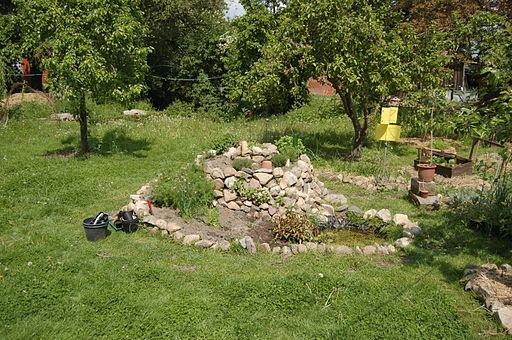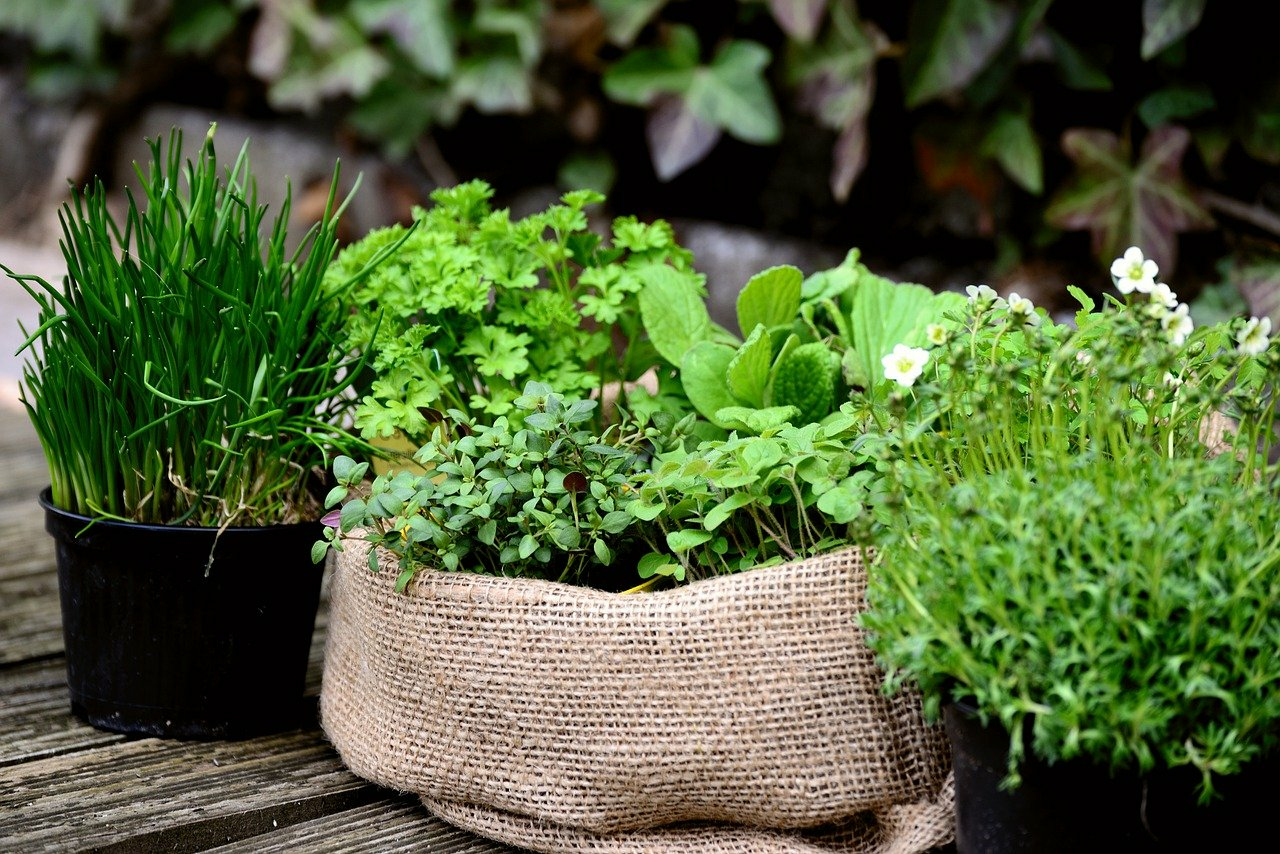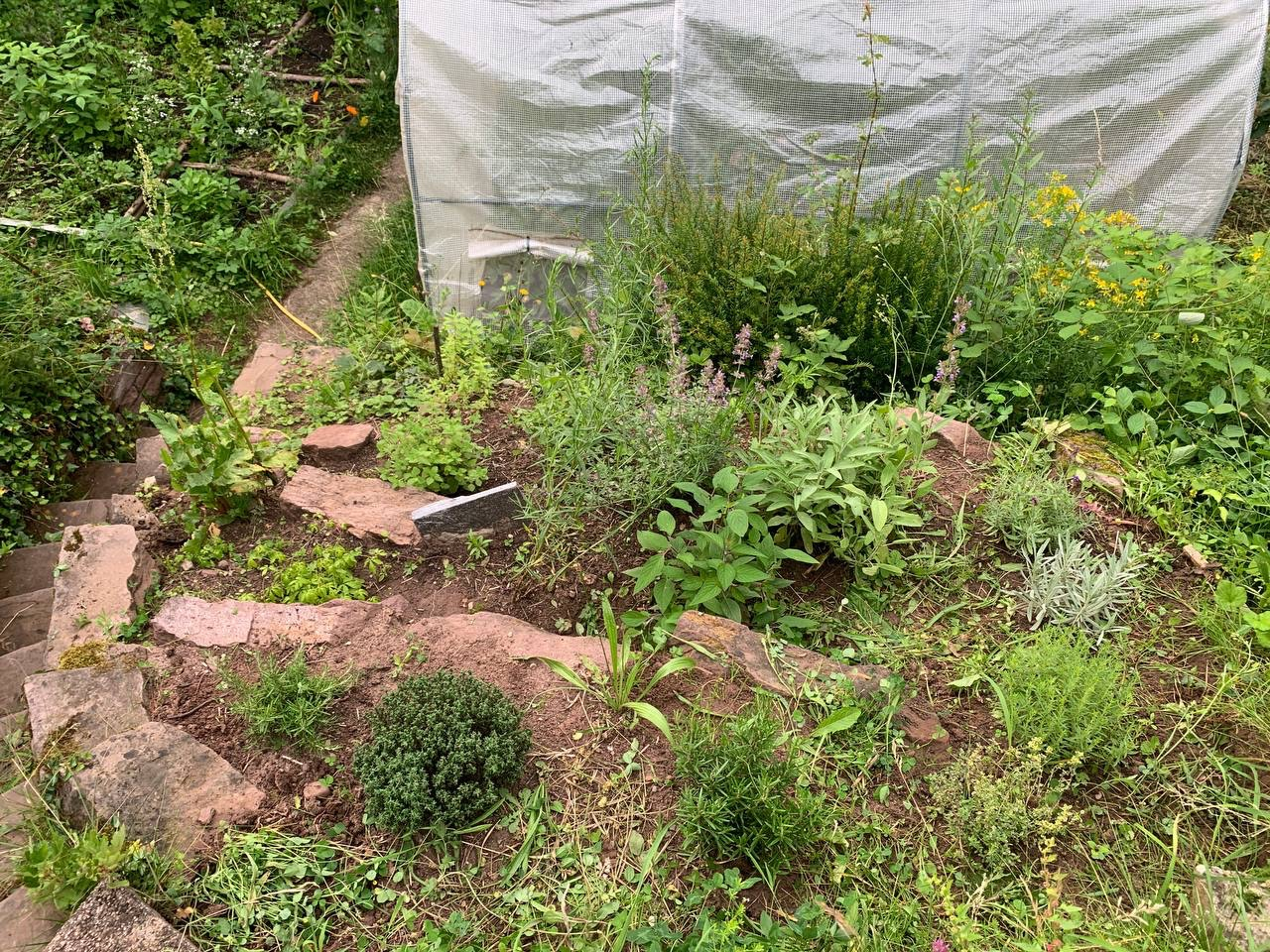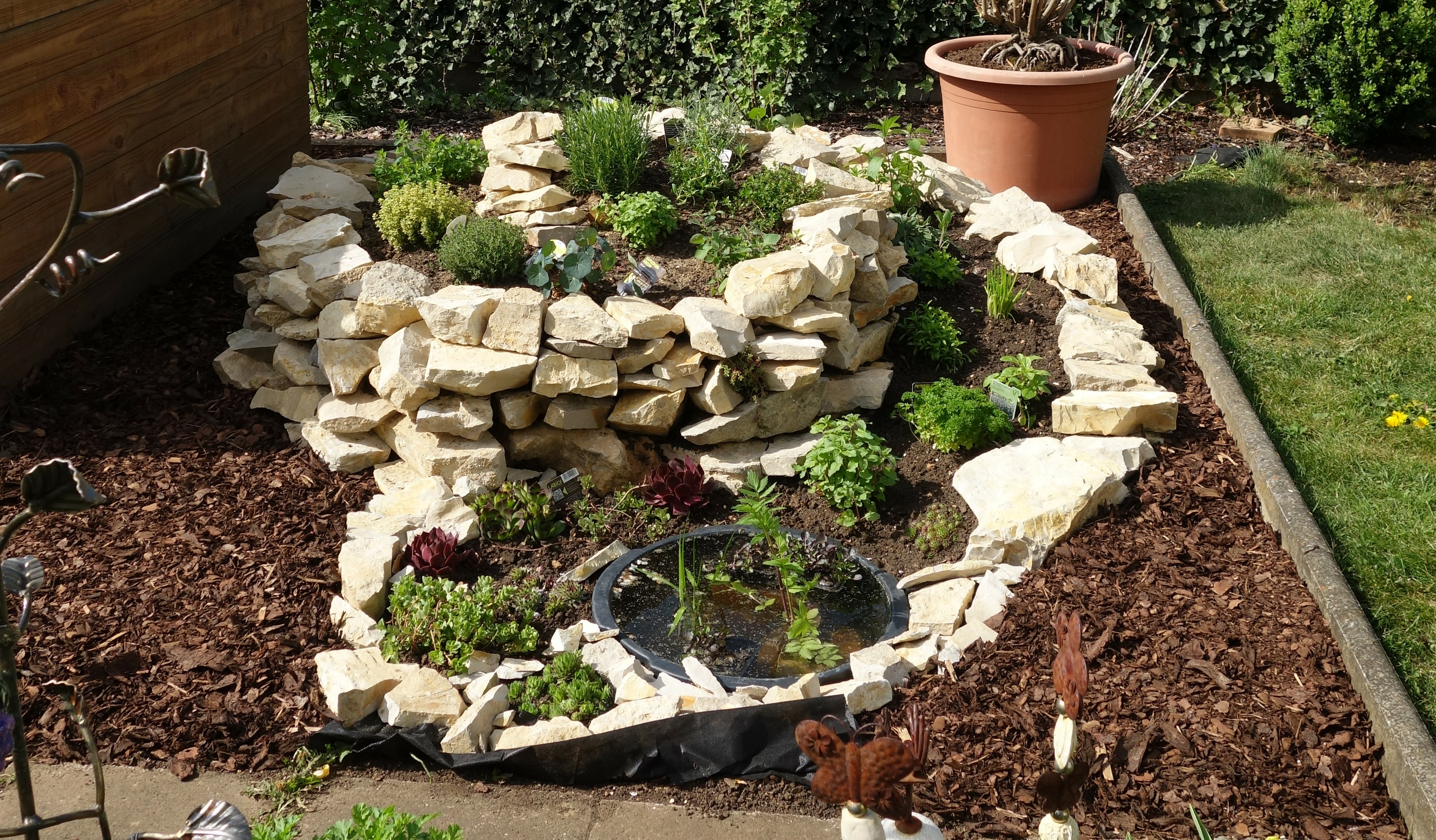Creating and planting a herb spiral
Diversity in a confined space
The snail-like structure creates staggered different soil and site conditions in which a wide variety of herbs find optimal conditions.
Location

Herbs prefer a sheltered, full-sun location and plenty of warmth. Mediterranean herbs such as rosemary are planted in the middle of the snail and are oriented towards the south.
Instructions - Dimensions

These instructions are for a herb spiral with space for 12 plants. The highest point in the middle is approx. 31,5 inches and the diameter should be 2,2 to 3,3 yards.
Material

- bricks or natural stones
- gravel and crushed stone
- compost, humus-rich soil and sand
- alternatively: pond liner or bucket
Instructions:

- Mark the layout on the ground
- Dig up the topsoil to spade depth and cover the area with gravel or rubble
- Build the spiral retaining wall
- Fill the base structure with coarse gravel or crushed stone as drainage
- Fill with soil (pay attention to the differences in zones!)
- Alternatively, you can establish a pond at the base of the spiral
- After 5 - 10 days you can plant it
Planting a herb spiral - The 4 zones

Zone 1 (Mediterranean zone): The sun-worshippers
- warmth-loving plants such as rosemary, lavender, curry herb, thyme & savory thrive here
Zone 2 (temperate zone): The hungry ones
- herbs such as oregano, basil & borage, which like richer soil feel at home here
Zone 3 & 4 (moist zone): The water-lovers
- herbs such as mint, parsley, lemon balm, tarragon & chives feel at home in moist, heavy soil
Titelbild von Johann56 auf wikimedia commons.
